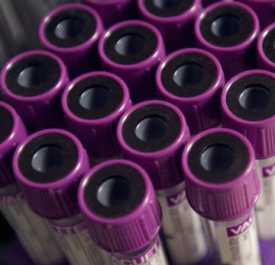Projected Lab Growth to Impact Health Data Infrastructure

- Clinical laboratories are expected to play a larger role in the health data infrastructure of hospitals in their ongoing push to reduce length of stays. In a global market for lab services projected to reach $102 billion by the end of this year, more emphasis will be placed on gathering, interpreting and delivering information to physicians for the purposes of monitoring patients’ conditions and overall health, according to a new report from research firm Kalorama Information.

The report estimates approximately 80 percent of physicians’ diagnoses result from lab tests. Aside from diagnosis, clinical lab testing is used to evaluate disease progression, monitor drug treatment and conditions, and determine individual therapies.
Kalorama expects an increase in the number of clinical labs, particularly in the independent sector, as the health industry looks to reduce costs while maintaining care standards. Among broad-based market drivers are the growing demand for early disease detection and diagnosis, the rise of personalized medicine, emphasis on disease monitoring and the use of expanded technologies.
In the United States, Kalorama anticipates downward pressure on pricing for lab services — with the overall market buoyed by an increase in volume. Although smaller, independent labs may find it difficult to compete with industry giants Quest Diagnostics and LabCorp, some have succeeded in operating on a regional basis or in focused areas such as genetic testing.
Specialty physicians in the areas of oncology, endocrinology and gynecology are taking advantage of lab testing for early detection and disease prevention, according to the report.
In a recent interview with HealthITInteroperability, Matthew Hawkins, president of laboratory software developer Sunquest Information Systems, said the three most important variables in today’s healthcare market are time, cost and patient safety. “In other words, it comes down to accurate diagnosis,” Hawkins explained.
In that context, Hawkins said lab information is a critical part of an ongoing movement toward more openness. In fact, most of the information contained in a patient’s EHR that is actionable and usable by a provider comes from a laboratory, he noted.
“It’s about being able to move data — making it more liquid from the lab, or even from a lab instrument that does the analysis — back to the lab software to the EHR or to the health information exchange, and ultimately to the patient,” Hawkins added.
Part of that paradigm shift would require laboratory information vendors to make data available at the push of a button for transfer into EHR systems — gathering all lab results for a particular patient, for example, and automatically populating the electronic record.
Progressive organizations have also elevated the laboratory’s role in providing an integrated view of a patient’s health, Hawkins explained. A blood test alone may not give providers a full picture of a patient.
“They might need to run some additional tests, whether it’s a microbiology test where they’re looking at a bacterial or a viral sample, or it’s an anatomic pathology test where they need to analyze a tumor in conjunction with the blood test or in conjunction with a molecular test or a genetic test,” he said. “What the market has told us is that rather than looking at three or four or five different systems, they want to be able to go to one central view and see an integrated screen of results from all of these different tests in dealing with the same patient.”
Sunquest has conducted beta and usability tests on a multi-view system and expects to launch it later this year.
